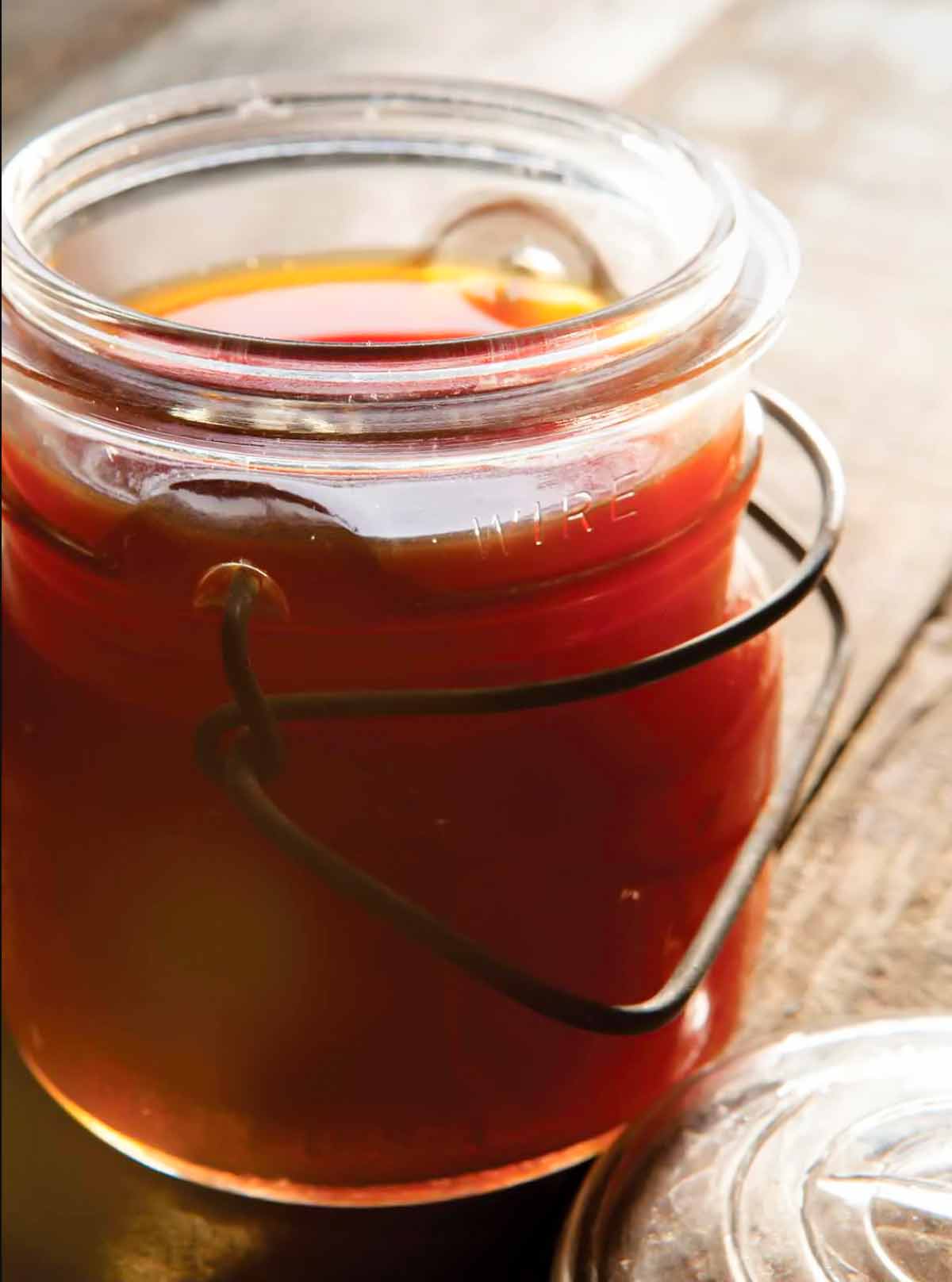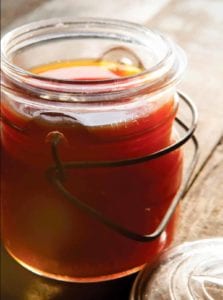
We confess we’re sorta amused by the recent “bone broth” trend that makes it seem as though making beef stock from bones is something recent and revelatory. Still, we appreciate a lovely stock, whatever you call it, and have found ourselves wooed by the spareness of this recipe’s approach, which respects the bones’ robust yet basic beefiness and leaves it unfettered with aromatics. If you’re accustomed to embellishing your stock with onion and carrots and so on, go ahead and do the same with this plain Jane version. We won’t tell. If you’re not accustomed to adding a splash of vinegar to your stock and wondering why bone broth recipes require it, we’ve been told that it is believed to draw out more minerals from the marrow, though we’ve yet to find research that supports this. What results still boasts a classic beef stock taste, so we’re not complaining.–Renee Schettler Rossi
What are the bes bones to use for beef bone broth?
Opt for grass-fed and preferably organic beef bones. They contain high amounts of healthful compounds, including CLA, ALA, and omega-3s, along with strong anti-inflammatory properties. And they lack all the hormones, antibiotics, and other cooties from conventional beef. Check your local health food store, either at the butcher counter or in the freezer section.

Beef Bone Broth
Equipment
- Stock pot, slow cooker (if following the slow cooker method), or pressure cooker (if following the pressure cooker variation)
Ingredients
- 5 pounds beef marrow bones (raw or cooked leftovers), rinsed and patted dry
- 5 quarts (20 cups) cold water
- 2 tablespoons cider vinegar
- 1 tablespoon salt, plus more to taste
- Two bay leaves, (optional)
- Vegetables and aromatics, such as onions, carrots, celery, garlic, parsnips, mushrooms, parsley, and so on, (optional)
Instructions
- Preheat the oven to a 400°F (204°C).
- Pat the bones dry. Toss the bones in a roasting pan and slide it into the oven and leave the bones alone until they’re aromatic and browned, about 30 minutes.
☞ TESTER TIP: If you’d rather make a different quantity than the recipe, simply use the ratio of 1 pound bones to 1 quart (4 cups) water. Add 1 teaspoon salt and 1/2 tablespoon vinegar per pound of bones.
- If using a stock pot, dump the bones, water, vinegar, salt, and bay leaves, if desired, in the pot. Cover and bring to boil. Reduce the heat to a very gentle simmer, cover partially, and cook for 12 to 24 hours, skimming any filth that floats to the surface. If necessary, add a little water to keep the bones submerged.If using a slow cooker, dump the bones, water, vinegar, salt, and bay leaves, if desired, in the pot. Cover and bring to boil. Reduce the heat to low, cover, and cook for 24 to 48 hours, skimming any filth that floats to the surface. If necessary, add a little water to keep the bones submerged.If using a pressure cooker, dump the bones, water, vinegar, salt, and bay leaves, if desired, in the pot. Cover and cook for 1 to 3 hours in a pressure cooker.
- Strain the bone broth, discarding the solids. Taste and, if desired, add more salt. Let cool to room temperature. Skim the solidified fat on the surface of the stock prior to using.
☞ TESTER TIP: The good folks at Genuine Food Company, a CSA in Maryland, suggested this tip for what to do with the congealed fat as the broth cools: "Rather than skimming it off and throwing it away, try mixing it with bird seed and put it in a net bag to hang from a tree in the winter or just smear it in the crotch of the tree. The birds will thank you."
- Cover the broth and refrigerate for up to 3 days or freeze it for up to 3 months. (Consider portioning the skimmed broth into 1-cup increments prior to freezing so you can thaw exactly the amount you need.) Originally published October 4, 2015.
Nutrition
Nutrition information is automatically calculated, so should only be used as an approximation.
Recipe Testers’ Reviews
I make this basic beef bone broth recipe religiously every fall and freeze it so it’s on hand all winter. It’s wonderful added to any soup or stew and a tea cup-full when one has the flu can almost perform miracles. This is a great addition to anyone’s repertoire of classic beef, chicken, shellfish, and vegetable stocks. I browned the bones before adding them to the stock pot—I feel this is always an important step when adding layers of flavor.
The flavor of this beef bone broth is simply the essence of marrow. There was no foam to skim. I used the slow cooker on low for 24 hours and kept it covered, because the broth did not come to vigorous enough simmer that would cause shaking and lead to cloudiness. There was not a ton of fat, as most of it was rendered during roasting. I got 1 3/4 quarts bone broth from 2 pounds bones. In terms of taste, it’s a very basic bone broth. It was very difficult to de-grease anything the broth touched—I had to wash my slow cooker 3 times to get it clean again!











This is an excellent recipe! I make massive amounts roughly 4-5 times a year. I suffer with diverticulitis & I do 4-5 day fasts sometimes & this broth sustains me.through it. I use a ladle to skim fat while it’s cooking so I don’t end up with a greasy mess when I strain it. I use onions, garlic, carrots, celery & parsley to add more nutrients to it. After I strain it, I refrigerate over night to solidify any left over grease. I put it back on the stove and finish it with dry red wine & seasoning/herbs. Seriously the red wine makes the flavor really POP! Oxtails make the best bone broth if you want my opinion, I also use meaty soup bones. Lucky for me I have slaughter/processing facilities I buy in bulk from. Thanks for a great basic recipe, it works well for me.
Deborah, it’s comments like this that I live for! I am so delighted you enjoy the recipe. It’s one of the best. And how lucky buy ox tails and meaty sheep bones whenever you like. I have to rely upon the local supermarket.
I’ve been making bone broth for years and this post has excellent information.
I freeze mine as I make a TON!!!
If my stock pot is too full of water, because I have a couple dozen bones, all sorts, and have to have them covered, I will strain the broth and then simmer and reduce the liquid for richer flavor.
Thanks, Sharon. Great tips!